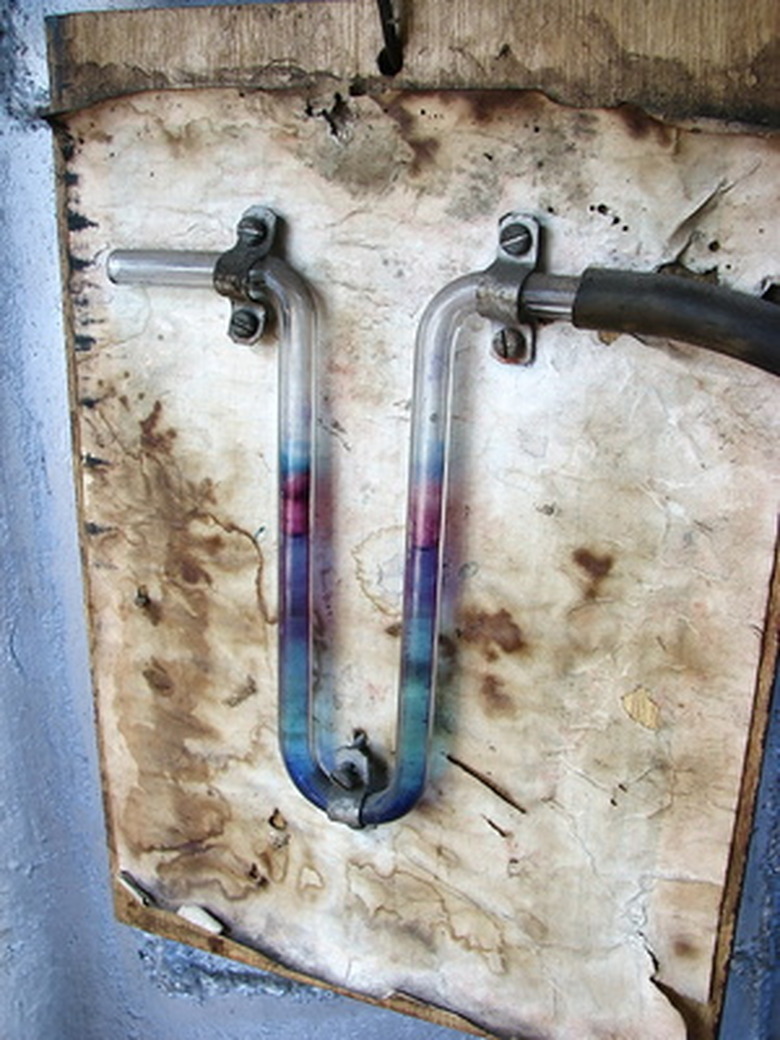How To Perform A Manometer Test
A manometer is used to measure the pressure difference between two gases, often atmosphere and the gas being tested. A typical manometer consists of a U-shaped tube filled with either mercury or liquid. The long sides of the tube have a measuring scale marked off in millimeters. When a gas line is connected to one side of the manometer it shifts and the difference in the height of the liquid in each side is used to calculate the pressure of the gas line. The formula for calculating the pressure is pd = ρ g h, where pd = the pressure difference, ρ = the density of the liquid in the manometer; mercury equals 13,590 kg/m3; water equals 1,000 kg/m3, g = acceleration of gravity, 9.81 m/s2 and h = the height of the liquid in meters.
Step 1
Connect the left side of the manometer tube to a pressure test valve. Depending on the manometer, you can use the connector tubes on the manometer or remove these tubes and use the tube on the item being tested, if available.
Step 2
Allow the liquid to stop moving in the U-tube before measuring.
Step 3
Record the height of the liquid in the left tube. If the height of the liquid has lowered, this measurement is positive. If the height of the liquid is higher than the start height, this measurement is negative.
Step 4
Record the height of the liquid in the right tube. Regardless of the liquid rising or falling, this measurement is always positive.
Step 5
Subtract the height of the right tube from the height of the left tube. This will give you the height shift of the liquid. Use the height difference as h in the pressure difference formula mentioned in the introduction. Use the density of the liquid specific to the manometer you are using.
Step 6
Calculate the pressure of the gas being tested.
Things Needed
- Manometer
- Gas to be tested
- Notepad and pencil
- Calculator
TL;DR (Too Long; Didn't Read)
Mercury and water behave differently in a tube. The edge of the liquid in a container is called the meniscus. Water has a convex meniscus, so read the height of the liquid at the low point of the meniscus, not at the edges of the water. Mercury has a concave meniscus, so read the height of the liquid at its highest point.
Cite This Article
MLA
Watson-Price, Erin. "How To Perform A Manometer Test" sciencing.com, https://www.sciencing.com/perform-manometer-test-7644846/. 24 April 2017.
APA
Watson-Price, Erin. (2017, April 24). How To Perform A Manometer Test. sciencing.com. Retrieved from https://www.sciencing.com/perform-manometer-test-7644846/
Chicago
Watson-Price, Erin. How To Perform A Manometer Test last modified March 24, 2022. https://www.sciencing.com/perform-manometer-test-7644846/
